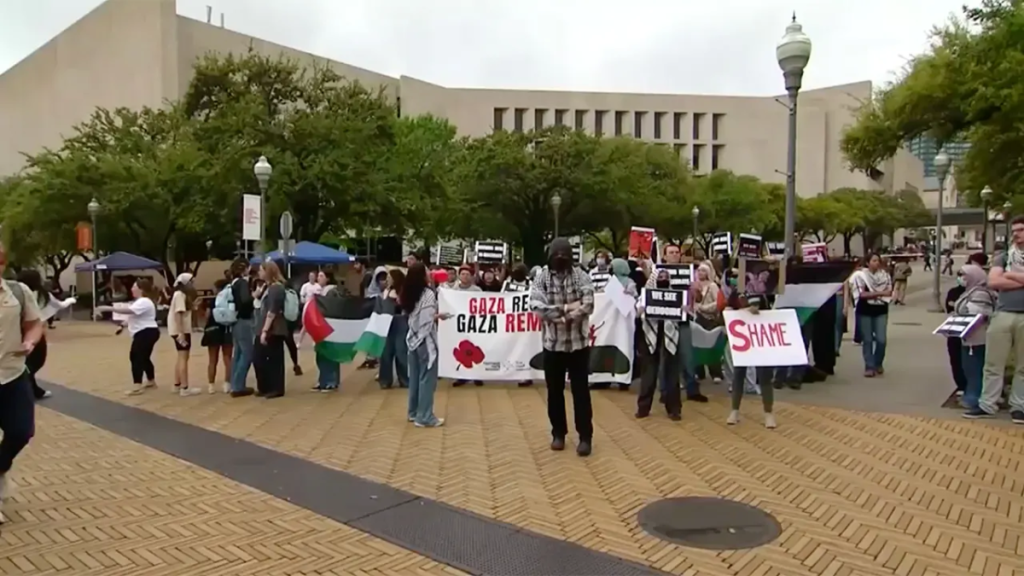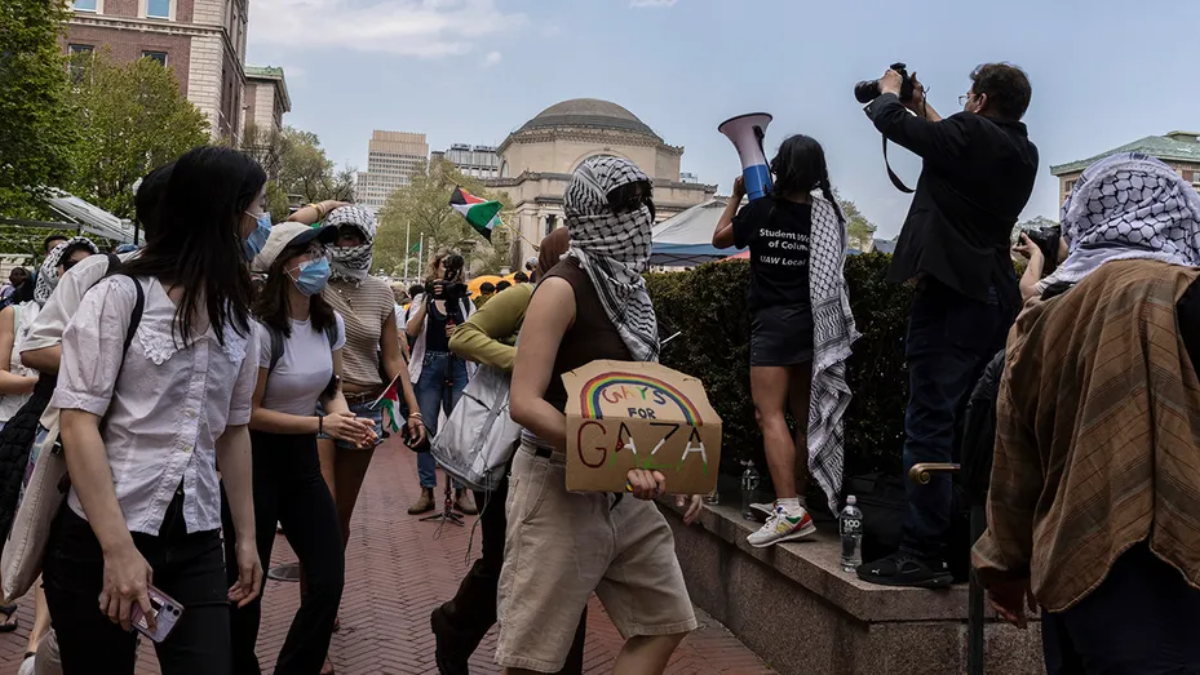Protests have been a significant part of American society for centuries, and the act of voicing discontent has been integral to creating change. However, a recent trend in the protest movements has caught the attention of many political observers.
Across various protests, from marches advocating for racial justice to demonstrations against government policies, a pattern is emerging. While each protest may appear unique, many of the individuals involved seem to follow a familiar script.
These individuals are not just passionate about their causes; they often follow a coordinated narrative that guides their actions, speeches, and engagements with the media.
The term ‘Seen and Unseen’ has been coined by political analysts to describe this phenomenon. The “seen” refers to the protesters who are actively involved, visible on the frontlines, and often the ones featured in the media.
The “unseen” refers to the strategists, organizations, and influencers behind the scenes who shape and organize these protests. Together, they create a powerful force that moves the public discourse in specific directions.
A Scripted Movement: How It All Comes Together
The idea that protests follow a script may seem counterintuitive, as demonstrations are often seen as organic expressions of public outrage.
However, analysts have noted that many protests, especially large-scale ones, often follow a predictable structure that includes media tactics, messaging, and even the strategic locations chosen for gatherings.
These protests may appear spontaneous, but they are frequently the result of careful planning and coordination.
Organizations, whether political advocacy groups, grassroots movements, or even foreign actors, have learned to influence public opinion by shaping the narrative around protests.
These entities craft messages that resonate with specific groups of people and tap into current social or political issues. They also coordinate the timing of protests, choosing dates and locations that maximize their impact.
The Role of Social Media
One of the most significant tools in modern protests is social media. In today’s digital age, platforms like Twitter, Facebook, and Instagram have become critical for organizing events, spreading information, and amplifying the voices of protesters.
Social media provides a powerful mechanism for getting the word out quickly and mobilizing large groups of people. However, it’s also a tool that can be manipulated to follow a specific script.
The use of hashtags, viral videos, and coordinated posts creates a sense of momentum that fuels the protest’s visibility. These online movements often transcend geographical limitations, uniting people across the country (or even the world) in a common cause.
The “seen” protesters are often the ones who engage directly with the media or create viral content that can spread their message far and wide. However, behind these individuals is a web of coordinators who strategically time their posts, curate their messages, and ensure that the narrative stays on track.
The Impact of Media and Public Perception
The media plays a crucial role in the visibility and success of a protest. News outlets, both mainstream and independent, often focus their attention on the most dramatic or emotionally charged moments, creating a narrative that aligns with the messaging crafted by protest organizers.
The presence of cameras, reporters, and journalists at key locations is often not coincidental. Media coverage not only elevates the importance of a protest but also shapes public perception.
In many instances, protesters are coached or trained on how to speak to the media, what soundbites to use, and how to engage with reporters.
The repetition of certain phrases or themes can make the protest appear more coordinated and united. For example, protesters may repeatedly use terms like “systemic injustice” or “equality for all” to keep the message consistent and understandable.
By presenting the protests in a specific way, media coverage can influence public opinion and garner support for the cause. However, it can also backfire.
If protests are seen as overly orchestrated or lacking in genuine grassroots support, they can lose their impact or even generate backlash.
The key for organizers is to strike a balance between controlled messaging and maintaining an air of authenticity.

Behind the Scenes: Influencers and Organizers
The “unseen” elements of a protest movement are just as important, if not more so, than the “seen” protesters. These are the individuals and organizations who plan, fund, and direct protests from behind the scenes.
Influencers, activists, and even political operatives often play pivotal roles in steering protests toward specific goals. These individuals understand how to leverage public sentiment, social media, and media coverage to amplify their cause.
The organizations behind protests often have the resources and expertise to run campaigns that can impact elections, sway policy decisions, or force companies to change their practices. They understand the importance of framing the issue in a way that resonates with the public.
Whether through direct action, lobbying, or media campaigns, these behind-the-scenes players are the ones who keep the protest’s messaging consistent and on-message.
The Risk of Over-Scripting
While there is undeniable power in organizing and scripting protests, there are also risks involved. Critics argue that by over-scripting protests, the authenticity of the movement is compromised.
If a protest is too tightly controlled, it can appear disingenuous or forced, alienating potential supporters who might feel that the movement is being manipulated for political or financial gain.
Moreover, scripted protests can sometimes fail to address the deeper issues at play. When the focus shifts from genuine grievances to orchestrated messages, the true concerns of the protesters can become overshadowed.
The risk is that the movement becomes more about the tactics and strategies of the organizers than the actual issues that prompted the protest in the first place.
The Future of Protests: A New Paradigm?
As protests continue to evolve in the digital age, the line between organic activism and coordinated campaigns will likely continue to blur.
The role of social media, media manipulation, and behind-the-scenes organizers will only grow, but this raises important questions about the future of protest movements.
Will they remain authentic vehicles for change, or will they become increasingly scripted events designed to advance specific agendas?
As society grapples with these issues, the “seen and unseen” elements of protests will undoubtedly shape the future of political movements.
Whether or not these protests can maintain their power and authenticity will depend on the ability of organizers and participants to strike a delicate balance between strategic messaging and genuine grassroots engagement.
For more on the role of social media in modern protest movements, visit Politico’s Guide to Digital Activism.
Disclaimer – Our team has carefully fact-checked this article to make sure it’s accurate and free from any misinformation. We’re dedicated to keeping our content honest and reliable for our readers.
